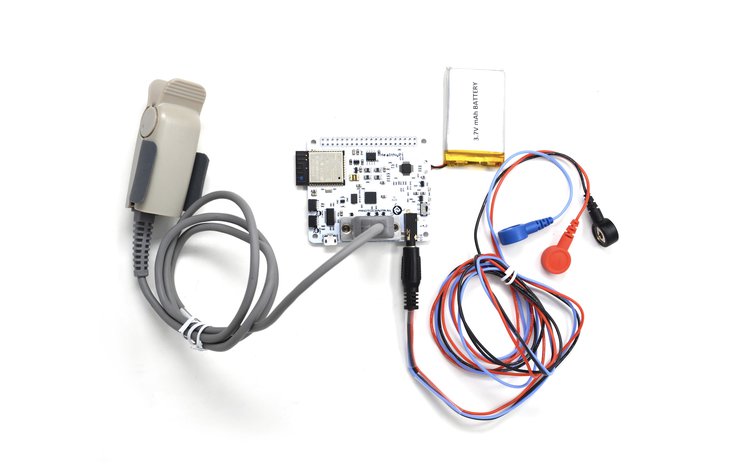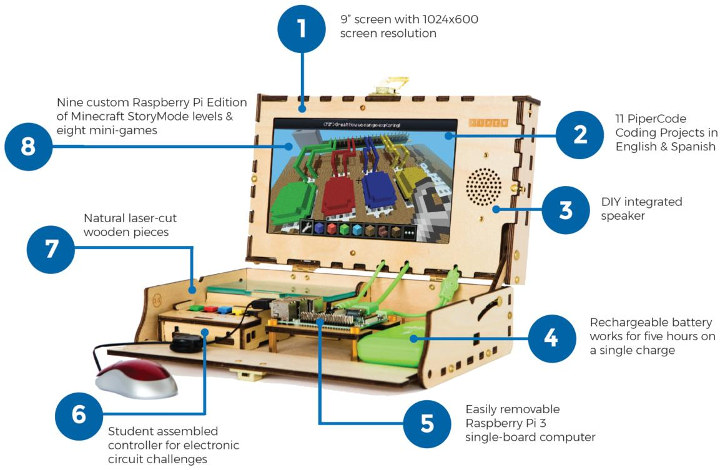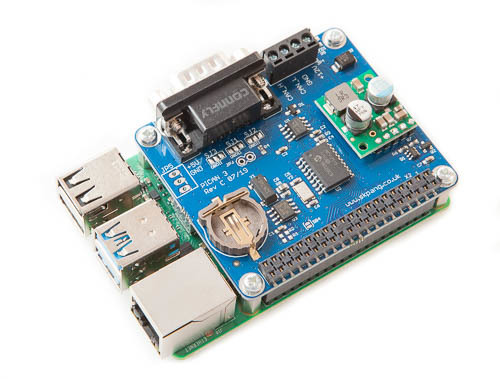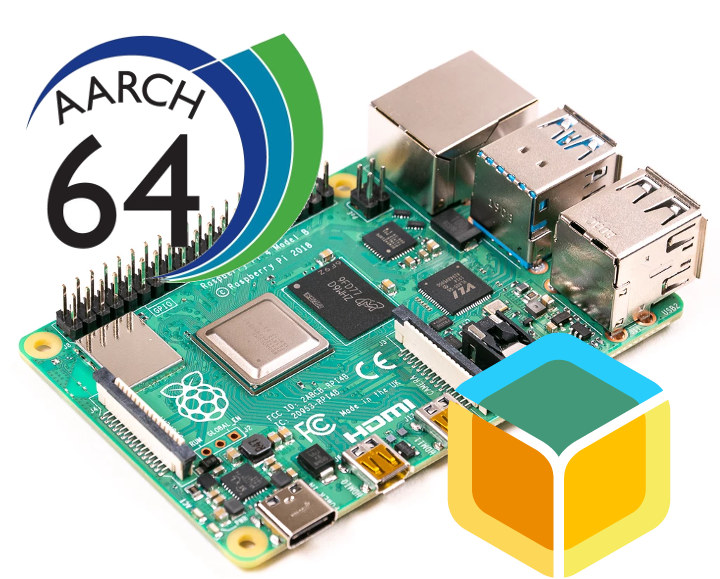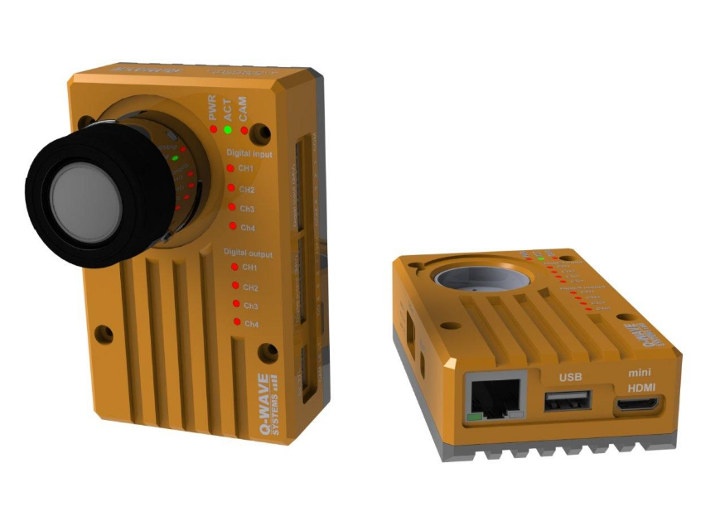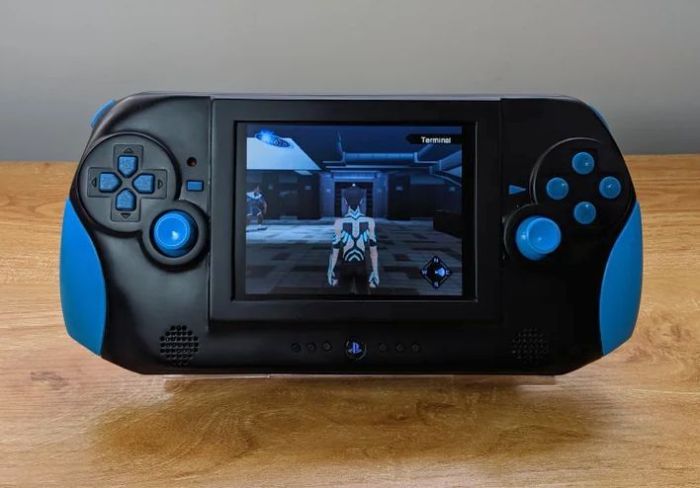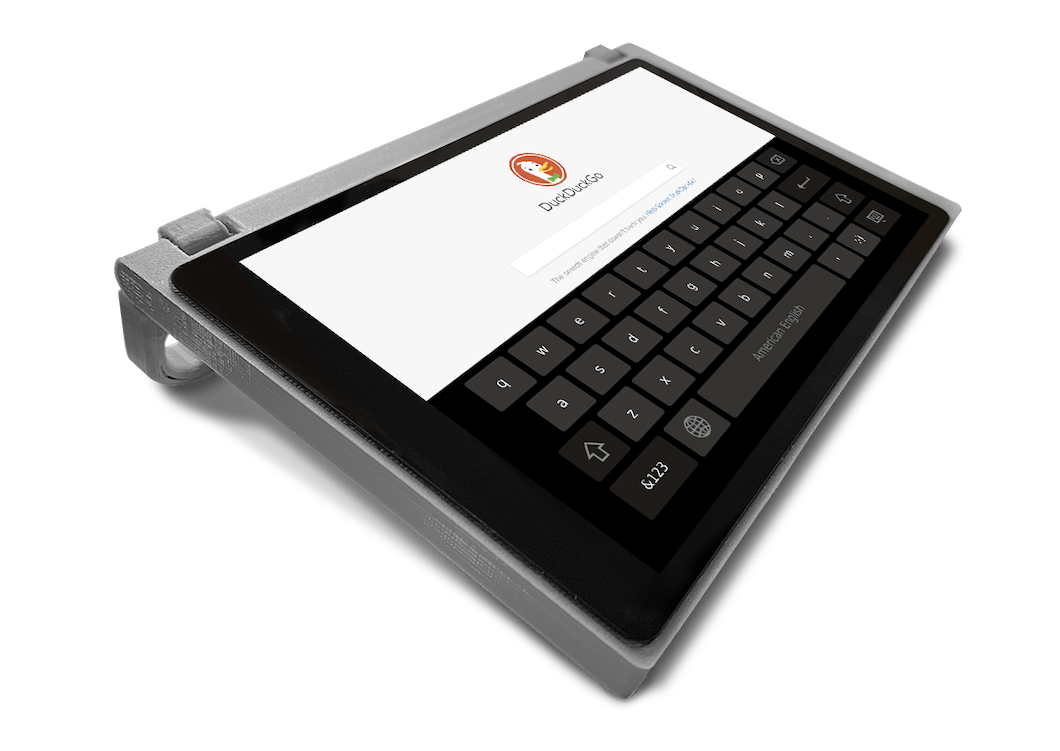CNX Software first covered AV1 open-source, royalty-free video codec aiming to compete against H.265 and succeed VP9 in 2016. I also tried the reference implementation and both encoding and decoding were really slow at that time and an AMD FX8350 powered computer would only achieve 0.36 fps encoding on a 352 x 288 video, while decoding was much faster at over 1,000 fps. This was really early work, and the final AV1 specifications were only released in March 2018, before companies like YouTube and Netflix started to publish AV1 video samples, and now I’ve noticed the former is sometimes streaming videos using AV1 codec on desktop computers and laptops. This still relies on software decoding, and most Arm platforms and entry-level level Intel computer may not be able to handle AV1 decoding, so hardware decoding will eventually be required, especially on battery-operated devices since it will consume much less power. […]
HealthyPi v4 Wearable WiFi Vital Signs Monitor Follows Raspberry Pi HAT Form Factor
HealthyPi v4 Campaign Starts ProtoCentral has started a Crowd Supply campaign for the HealthyPi v4, its latest vital signs monitoring dev kit. The HealthyPi v4 is wearable, wireless, and can be mounted on a Raspberry Pi. The units are all open source and stand-alone made for end-users, students as well as researchers and developers. An Improvement on HealthyPi v3 The recent increase in health-related tech has fueled ProtoCentral’s desire to bring its HealthyPi v3 up to current usability and development standards. The retail versions of the HealthyPi v4 are made specifically to work in conjunction with the Android OS for ease of use and mobility. Also, the Raspberry Pi HAT form factor is also supported in this version of the device. Articles On Health-Related Development The articles that have touched on health-related issues and topics from our archives, as well as very recently include HEGduino a neurofeedback monitor and […]
Piper Computer Kit 2 is a DIY Raspberry Pi 3 Computer for Kids’ Education
Kids can easily build theirs own computer and then learn more about electronics and programming thanks to Piper Computer Kit 2. The kit is based on Raspberry Pi 3 SBC, a 9″ display, a power bank, and all bits and pieces required for assembly. There’s also a 16GB microSD with the OS and the company’s PiperCode software to learn the basics of programming. The complete kit comes with the following items: SBC – Raspberry Pi 3 Model B Storage – 16GB MicroSD card Display – 9″ 1024 x 600 LCD display with HDMI cable Audio – Integrated speaker 25+ laser-etched wooden and acrylic pieces 50+ hardware pieces 20+ electronic components Battery – 7,800 mAh rechargeable battery/power bank Phillips-head screwdriver 8 square foot laminated blueprint USB Mouse This is whay it looks like after around two hours of assembly time. Kids can then start playing Raspberry Pi Edition Mineccraft and some […]
PiCAN3 Board for the Raspberry Pi 4 adds CAN Capabilities plus a Real-Time Clock
Copperhill Technologies has recently announced the release of its PiCAN3 CAN-Bus Board for the Raspberry Pi 4. The PiCAN3 adds Controller Area Network capabilities plus a real-time clock to the new Raspberry Pi SBC. The Controller Area Network (CAN Bus) is a robust and common industrial communication bus used mostly in the automotive industry. CAN supports long travel distance, medium communication speed, and quite reliable. One of the most significant advantage with CAN-BUS is that it connects any number of ECUs (or microcontrollers) in your car through the two-wire bus, CAN High and CAN Low, reducing the weight of wires that could be gained by using point-to-point communication between ECUs. CAN bus is one of five protocols used in the on-board diagnostics (c)-II vehicle diagnostics standard. Although it is popular in the automotive industry, the Raspberry Pi doesn’t provide an off the shelf support for working with CAN-BUS. Users interested in trying out […]
BalenaOS may be the First Fully Functional 64-bit OS for Raspberry Pi 4
BalenaOS 64-Bit OS Balena just announced the release of a 64-bit OS for the Raspberry Pi 4, that latest release of the iconic SBC. BalenaOS is designed to run 32-bit and 64-bit Docker containers side-by-side and simultaneously. It also supports up to 4GB of memory, to accomplish that feat. The balenaOS also supports several other embedded systems and versions of Raspberry Pi How BalenaOS Is Set Up The BalenaOS is opensource, Yocto Linux-based host OS made for containers. The workflow is fast and current and allows for a number of different embedded systems, but especially Raspberry Pi 4 in a 64-bit environment. The Main Advantage With the advances in the Raspberry Pi 4 platform, the faster data throughput, improved graphics handling, and the faster processor speeds, the BalenaOS is taking full advantage of the Raspberry Pi 4. It adds a wide variety of possibilities to a platform that was waiting […]
Raspberry Pi CM3+ based EagleEye Smart Camera Works with OpenCV and LabVIEW NI Vision
We previously covered Q-Wave Systems’ Melon S3 board combining a Xilinx Spartan 3E FPGA with ESP8266, but the Thai company is back is a completely different product: EagleEye Smart Camera. The board is powered by Raspberry Pi Compute Module 3+ (CM3+) with 16GB or 32GB flash, and equipped with a 5 MP camera for machine vision and robotics applications. There are two version of the board Uno and Industrial with the latter adding 24V digital input and outputs, circuit protections and support for industrial temperature range. EagleEye smart camera key features & specifications: SoM – Raspberry Pi CM3+ with Broadcom BCM2837B0 quad core cortex-A53 processor, 1 GB RAM, and 16GB or 32 GB flash Camera – 5 MP OV5647 image sensor, CS/M12 lens holder + 4mm CS lens Video Output – mini HDMI port Networking – 10/100M Ethernet USB – 1x USB 2.0 host port up to 1.2A Expansion Uno […]
PIS2 DIY Handheld PS2 Game Console Uses Raspberry Pi 2 SBC as SMB Server
It’s a Handheld PS2 Game Console The PIS2 is a handheld PS2 game console that has the chopped-up insides of PS2 game system stuffed into a small console, along with a display, controllers and a Raspberry Pi 2 to access the games from the Ethernet to load directly to the hardware. Sony has officially discontinued all handheld PSs as of March 2019, so these DIY consoles are popping up regularly. This one is quite an accomplishment. It Took a Long Time The creator of the PIS2, a hacker named Darkwing, started work on the unit in 2013. He stopped for some time, then started documenting his work on the system in 2017. The ambitious first design specs looked like this PS2 scph-79002 5.6″ Dalian Good Display and VGA chip Genius MaxFire Blaze 2 controller 11.1V 6200mAh made of 6 ncr18650a cells Texas instrument ptn78020 switching regulator IBM Lenovo 05K5494 Laptop […]
CutiePi Open Source Tablet uses Raspberry Pi Compute Module 3
The announcement of the CutiePi, an open source tablet-based on the Raspberry Pi Compute Module 3 comes a bit late for the Pi-based tablet/laptop space. We have reported on some of the more versatile tablets using the Raspberry Pi platform, the Diskio Pi 13.3” DIY Tablet and the RasPad tablet kit, with a few more Raspberry Pi-based tablet/laptop kits also listed in the same article. Timeline and Pricing CutiePi Tablet has no firm release date, but the company is saying late 2019 for launch. The development team is also saying everything is subject to change, but look for the pricing to be USD $150 – $250. Click to Enlarge How CutiePi is Different The tablet is different in its thinner design and in the software designed specifically to use Linux Raspbian OS for a touch screen platform. There are readily available source code and case plans for the ambitious developer […]



